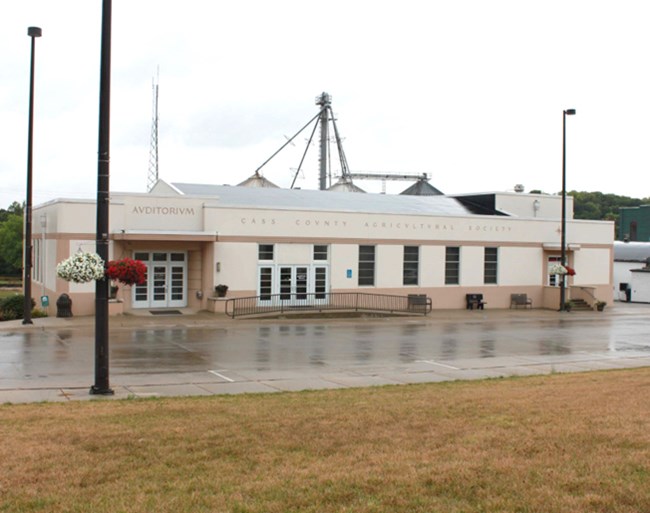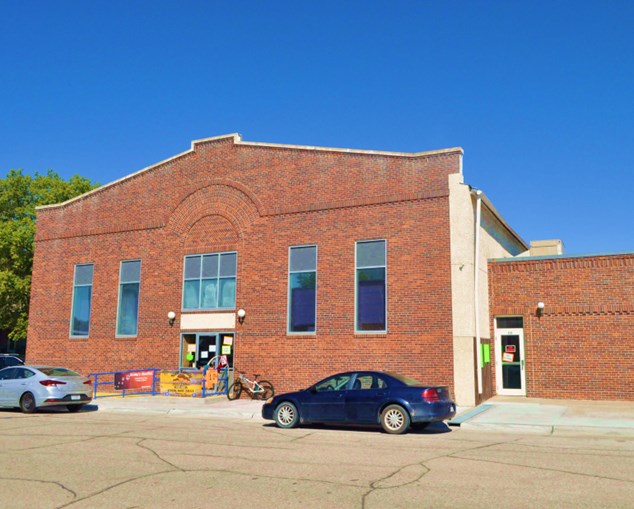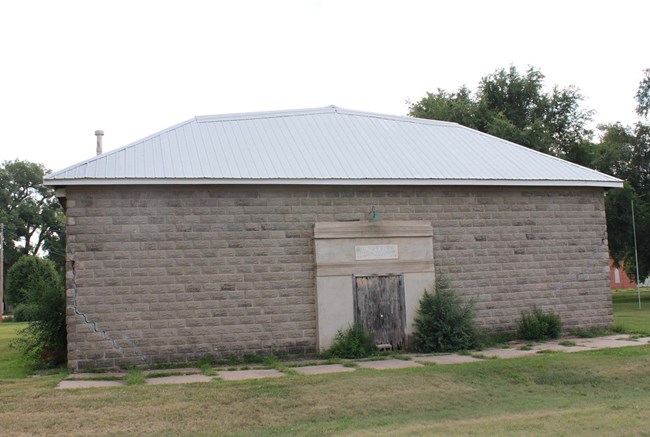
Image courtesy of Nebraska State Historic Preservation Office.
Nebraska, Reference number: 100008673
Area of Significance: Entertainment/Recreation, Social History
Period of Significance: 1939-1967
The Cass County Agricultural Society Building (Auditorium) is a two-story streamlined Moderne building in the small town of Weeping Water in Cass County, Nebraska. The period of significance begins in 1939 when it was completed and extends through 1967 when the Agricultural Society removed the fair from downtown Weeping Water to land they purchased approximately three miles north of downtown. The nomination’s Narrative Statement of Significance is approximately 4-1/2 pages of text, and makes good use of subheadings to walk the reader through relevant history and drill down to the property’s history.
Link to file

Image courtesy of Nebraska State Historic Preservation Office
Nebraska, Reference number: 100008672
Area of Significance: Entertainment/Recreation, Social History
Period of Significance: 1934-1972
The Bohning Memorial Auditorium is a one-story red brick building with a basement auditorium. Its construction was funded in large part through a bequest from a local resident, and supported with labor provided through the Civil Works Administration (CWA). This nomination was prepared under the New Deal-era Resources in Nebraska Multiple Property Document Form.The nomination’s Narrative Statement of Significance is less than four pages: it is comprised of one paragraph on the CWA; one paragraph on CWA efforts in Buffalo County; and two pages on the community’s role in the construction and use of the auditorium, including one paragraph on each of the areas of significance.
Link to file

Image courtesy of Missouri State Historic Preservation Officer
Missouri, Reference Number: 14001125
Area of Significance: Ethnic History: Black
Period of Significance: 1903–1970
The Father Dickson Cemetery is a 12-acre African American cemetery established during an era in which most cemeteries either segregated African American burials or banned them altogether. The cemetery retains most of its original lot size and the grounds have remained undisturbed. The cemetery is locally significant as a commercial African American cemetery founded during the era of segregation in St. Louis County. It is also significant for its potential to yield information regarding the area’s under-documented local African-American population during the Jim Crow era.This nomination makes good use of subheadings within the 11-page Narrative Statement of Significance, moving from the general to the specific.
Link to file

Image courtesy of Nebraska State Historic Preservation Officer
Nebraska, Reference Number: 100008680
Area of Significance: Recreation and social history
Period of Signifigance: 1942–1972
The Inavale Gymnasium is a late period Works Progress Administration (WPA) building completed in 1942, one year before the end of the program. It is a single-story, small scale, concrete block building that was used for community meetings, social events, and basketball games. Later, and through much of the historic period, it was used as a roller skating rink.This nomination was prepared under the New Deal-era Resources in Nebraska Multiple Property Document Form (MPDF). A single paragraph relates a very brief history of Inavale and Webster County; two paragraphs relate the history of the WPA in Nebraska; and a single paragraph describes the applicability of the MPDF to Inavale Community Hall and Gymnasium.
Link to file
Last updated: January 9, 2025
